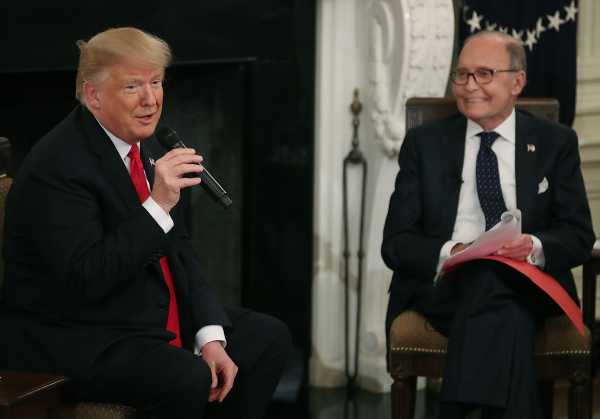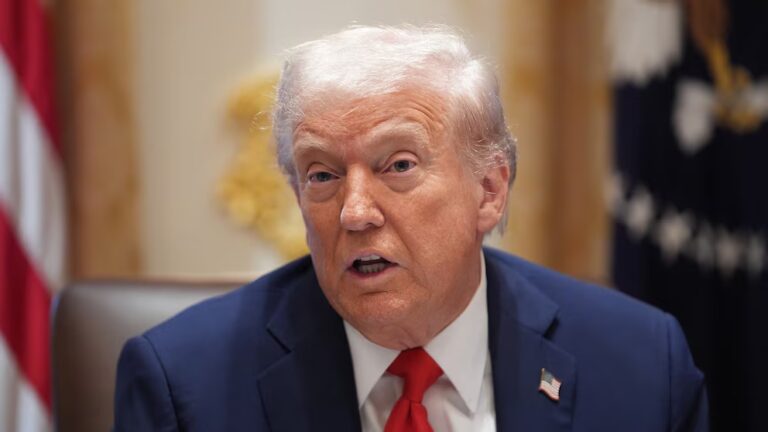
Much like President Donald Trump’s grave concerns about the migrant caravan have dissipated in the wake of the 2018 midterm elections, so has the nebulous middle-class tax cut he made up a couple of weeks before Election Day.
It was always clear this was never going to happen.
Trump raised eyebrows in October when he suddenly began to talk about a 10 percent tax cut for the middle class that would be passed ahead of the midterms. He told reporters in Nevada that he was working on a “very major tax cut for middle-income people” and that the White House and congressional leaders were “studying very deeply, round the clock” on something to be announced very soon — certainly ahead of the elections.
No one seemed to have any idea what he was talking about: There was no discernible plan in the works, and his aides reportedly had no idea what was going on. Congress wasn’t even in session. (When a reporter pointed it out to Trump, he said the vote would be after the election, but the proposal would be released beforehand.)
Trump and Rep. Kevin Brady (R-TX), chair of the House Ways and Means Committee, admitted a couple of weeks later but still before the election that there was no middle-class tax cut on the way in the then-empty halls of Congress. But they still tried to dangle the carrot, saying they’d take “swift action” on a 10-percent cut at the start of the new Congress next year.
Now that the midterms have come and gone, it seems like that’s out the window, too. It was never going to be likely with Democrats in control of the House, but the real problem is that there never was a plan in the first place.
Trump’s top economic adviser lets the cat out of the bag on a new middle-class tax plan
Larry Kudlow, director of the National Economic Council under Trump, acknowledged any hope of a middle-class tax cut was dead on arrival in an interview with Politico’s Ben White published on Thursday.
He also said an infrastructure bill — another big Trump promise — is likely out the door as well. “Anybody that thinks, you know, like this trillion-dollar [infrastructure spending number], which is over 10 years — we don’t have that,” he said.
It’s easy to look at Kudlow’s concerns about paying for a middle-class tax cut or infrastructure spending with a bit of skepticism. The 2017 tax bill Republicans passed, which cut taxes for most people but overwhelmingly benefited corporations and the wealthy, cost $1.5 trillion, and the GOP didn’t seem to have many qualms about that. The Treasury Department last month reported that the federal deficit grew to $779 billion this year under GOP leadership, the largest since 2012, when the country was still seeing the effects of a recession.
Republicans couldn’t run on their real tax cuts, so they tried to run on fake tax cuts instead
It seems unlikely that planning on whatever 10-percent tax cut Trump was promising ahead of the election got very far, though Republicans won’t openly admit it. Brady told HuffPost this week that Congress had developed some “good options” for Trump, but in describing details, he said it was “just generally a focus on middle-class families and workers.”
Trump and Republicans are caught in an odd loop around tax legislation and elections. They passed a tax cut bill last year, but because it hasn’t been very appealing to voters, they didn’t really talk about it on the campaign trail. Instead, they made new and, in Trump’s case, nebulous promises about another future bill if they were reelected.
In September, House Republicans rolled out “Tax Reform 2.0,” a set of new proposals to add on to the 2017 bill. Among other things, the proposals would make the individual tax cuts contained in last year’s legislation permanent — they’re currently scheduled to expire after 2025.
Later in the month, the House quietly passed the bill that would extend the individual cuts when most of the media’s attention was on then-Supreme Court nominee Brett Kavanaugh. They sent it to the Senate, which appears to have no intention of taking it up. And now that Democrats will take the House, there’s no clear path forward, unless the Senate votes in the lame-duck session, which seems highly unlikely.
The GOP had a chance to create a tax cut that did more for the middle class when it passed the Tax Cuts and Jobs Act in 2017. Instead, Republicans went with a tax bill that, while it does cut taxes for most Americans, overwhelmingly benefits the rich and corporations.
According to estimates from the Center on Budget and Policy Priorities, while most Americans will benefit at least somewhat, the top fifth of earners get 70 percent of the bill’s benefits, and the top 1 percent get 34 percent. The new tax treatment for “pass-through” entities — companies organized as sole proprietorships, partnerships, LLCs, or S corporations — will mean an estimated $17 billion in tax savings for millionaires in 2018. American corporations are showering their shareholders with stock buybacks this year thanks in part to their tax savings. In the process, the bill also increased the deficit.
Brady told HuffPost that now that Democrats are in charge, maybe they’ll deal with the whole middle-class thing. “I’ve noticed several Democrats are interested in more middle-class cuts as well,” he said, “so we’ll see if we can find some common ground.”
Sourse: vox.com






